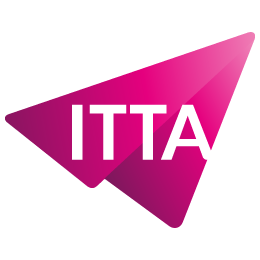Home > Trainings > Development > Database Management > Introduction to NoSql Cassandra Hbase MongoDB Couchbase
Today, companies collect vast amounts of data from a wide variety of sources. This information does not always fit into traditional relational databases. To address this challenge, NoSQL databases provide a modern and efficient alternative. This training, focused on Cassandra NoSql, MongoDB, HBase, and Couchbase, offers a clear understanding of the essential technologies needed to manage unstructured data.
Cassandra NoSql stands out for its ability to handle massive volumes of data distributed across multiple nodes. HBase, MongoDB, and Couchbase complement this ecosystem by bringing their own specific strengths. Understanding their differences and knowing how to use them according to business needs has become essential for architects, developers, and administrators. This training emphasizes practical application and the understanding of key concepts. You will also discover the importance of the PAC theorem, sharding, and possible integrations with Hive or Java.
Module 1: Introduction to NoSQL
Module 2: Understand Cassandra, MongoDB and HBase
Module 3: Working with Cassandra
Module 4: Integrate Hive & Java with HBase
Module 5: Working with MongoDb
Module 6: Working with Couchbase
Information systems are evolving rapidly, and data management lies at their core. Traditional relational databases, although still widely used, reveal their limits when facing massive volumes and unstructured data. Companies must now handle streams coming from multiple sources: IoT sensors, videos, social networks, or mobile applications. In this context, NoSQL databases provide an appropriate response. They offer flexibility, high availability, and scalability. Understanding these technologies has become an essential asset for IT professionals.
Among the available solutions, Cassandra NoSql holds a special place. It is designed to process huge volumes of data distributed across multiple nodes. Its distributed model ensures both high performance and fault tolerance. This type of database is widely used in sectors where service continuity is critical: telecommunications, e-commerce, media, and financial services. Mastering Cassandra means gaining an in-demand skill that opens opportunities to work on large-scale projects.
While Cassandra is a reference in distributed data management, other solutions complete the NoSQL landscape. MongoDB stands out for its document-oriented approach, ideal for modern web applications. HBase, inspired by Google’s BigTable model, focuses on fast analysis of massive datasets. Couchbase, meanwhile, combines performance and flexibility for interactive and real-time use cases. Each of these databases meets specific needs. Knowing them allows professionals to choose the right solution according to the project, instead of applying a single approach.
Learning how to work with NoSQL databases is not just about running commands or configuring clusters. It is crucial to understand the underlying theoretical concepts. The PAC theorem, for instance, highlights the unavoidable trade-offs between consistency, availability, and partition tolerance. These principles guide architectural decisions in distributed systems. A professional who masters both theory and practice stands out and becomes a valuable resource within their organization.
NoSQL databases are not only a technical subject; they bring measurable benefits. They reduce response times, support millions of simultaneous users, and simplify the integration of heterogeneous data. A video streaming platform, for example, can store its content and metadata in Cassandra NoSql to guarantee smooth global delivery. Similarly, an e-commerce application may use MongoDB to manage product catalogs and real-time interactions. These real-world cases show that learning NoSQL databases directly answers market needs.
Taking specialized training goes beyond learning basic commands. Participants gain the ability to design robust distributed architectures, optimize performance, and secure environments. They learn how to efficiently manage clusters, implement replication, and ensure resilience in the event of failures. The program emphasizes practical scenarios so each learner can quickly apply their knowledge in professional contexts. These skills are transferable and valuable across many industries, from finance to manufacturing to digital services.
Training in NoSQL databases, and especially in Cassandra NoSql, strengthens professional profiles. Companies are actively seeking experts capable of designing and maintaining modern systems. These skills open opportunities for roles such as architect, data engineer, or technical consultant. They also provide access to innovative projects involving Big Data, artificial intelligence, and the Internet of Things. In a market where data is a strategic asset, being comfortable with these technologies is a real competitive advantage.
What are the differences between relational and NoSQL databases?
Relational databases rely on fixed schemas and linked tables. NoSQL databases offer more flexibility and adapt better to unstructured data.
When should Cassandra NoSql be used?
Cassandra is particularly suited for environments that require high availability and the management of massive datasets distributed across multiple servers.
Is MongoDB easier than HBase?
MongoDB is generally considered more accessible due to its document-oriented model. HBase, on the other hand, is optimized for large-scale analytics and requires deeper technical understanding.
Which professions use NoSQL databases?
They are used by software architects, data engineers, system administrators, and modern application developers.
Do I need SQL knowledge before learning NoSQL?
A basic understanding of SQL and relational databases is recommended. It helps grasp the concepts and differences between the two approaches.

Nous utilisons des cookies afin de vous garantir une expérience de navigation fluide, agréable et entièrement sécurisée sur notre site. Ces cookies nous permettent d’analyser et d’améliorer nos services en continu, afin de mieux répondre à vos attentes.
Monday to Friday
8:30 AM to 6:00 PM
Tel. 058 307 73 00
ITTA
Route des jeunes 35
1227 Carouge, Suisse
Monday to Friday, from 8:30 am to 06:00 pm.